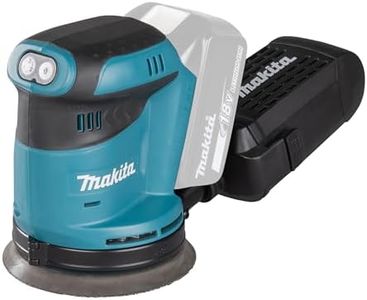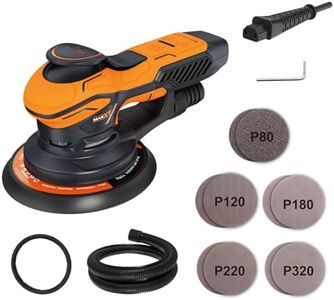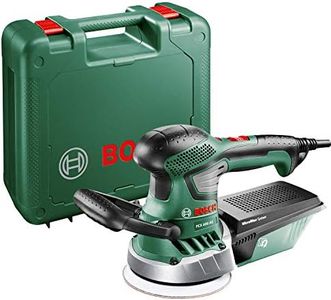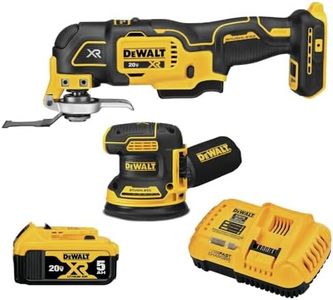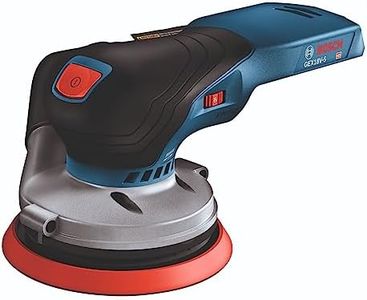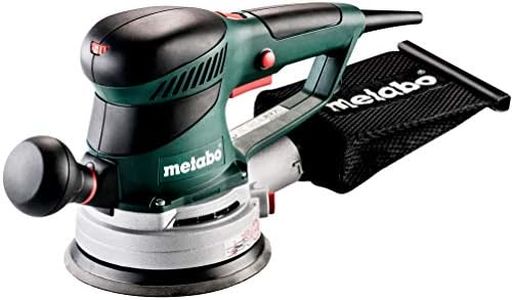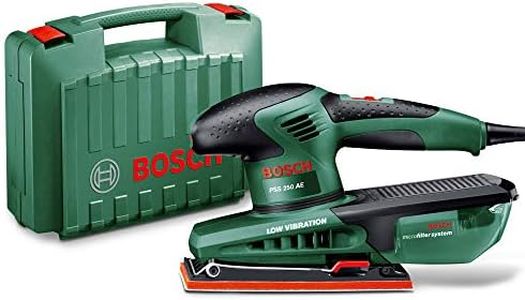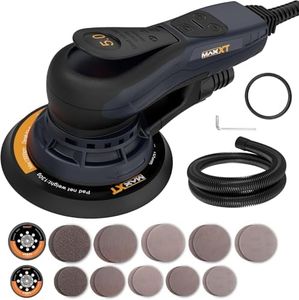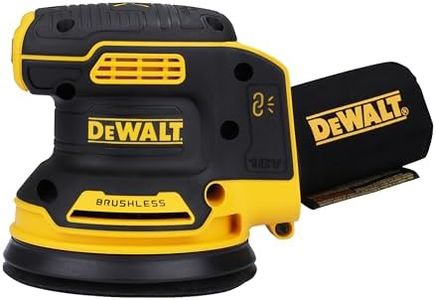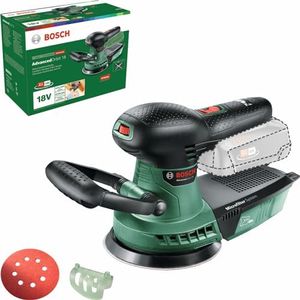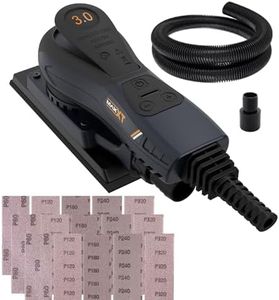We Use CookiesWe use cookies to enhance the security, performance,
functionality and for analytical and promotional activities. By continuing to browse this site you
are agreeing to our privacy policy
10 Best Random Orbital Sanders
From leading brands and best sellers available on the web.Buying Guide for the Best Random Orbital Sanders
Choosing the right random orbital sander can make your sanding projects faster, smoother, and a lot more enjoyable. These tools are handy for smoothing wood, prepping surfaces for paint, or even tackling car bodywork. To find the best fit for your needs, you'll want to look beyond brand names and focus on a few important features. Think about the types of projects you typically do and how much comfort, control, and power you need—this will help you navigate the choices with confidence.Power SourceThe power source refers to whether the sander is corded (plugged into an outlet) or cordless (powered by a battery). Corded sanders can run as long as they're plugged in and generally offer steady, strong performance, making them ideal for long sessions in the workshop. Cordless sanders provide more mobility, which is great if you're moving around or working away from outlets, but their runtime is limited by battery capacity. If your projects are mostly at a workbench, a corded option is usually best; for flexibility or on-the-go jobs, cordless might suit you more.
Pad SizePad size describes the diameter of the sander’s sanding surface, most commonly either 5 or 6 inches. A smaller pad (around 5 inches) offers better control in tight spaces and is usually lighter, which is great for finishing work or smaller pieces. Larger pads (6 inches or more) cover more area quickly, making them better for bigger projects like doors or tabletops. Think about what kinds of surfaces you’ll be working on most—smaller pads for detail and corners, larger pads for speed on big areas.
Speed (OPM - Orbits Per Minute)Speed is typically given in orbits per minute (OPM), showing how fast the sander moves. Some sanders come with a single speed, while others offer variable speed controls. Lower speeds are helpful for delicate surfaces or when you need more control to avoid sanding too aggressively, while higher speeds make quick work of tougher jobs or larger spaces. Variable speed is best if you’ll work on a variety of materials; if you know your projects are always similar, a single-speed sander may be all you need.
Dust CollectionSanding creates a lot of dust, so most orbital sanders have a dust collection system—either a bag, a canister, or the ability to connect to a shop vacuum. Better dust collection means a cleaner workspace and healthier air. Basic bags work for small, quick jobs, but they fill up fast. Canisters catch more dust but need emptying. The best results come from connecting the sander to a vacuum, especially if you sand indoors or for extended periods. Consider your tolerance for mess and whether you have a vacuum system available when choosing.
Ergonomics and HandlingThis involves the shape, weight, and comfort of the sander. A lighter sander is easier to use overhead or for long periods, while rubberized grips and well-thought-out controls can reduce hand fatigue and make fine work easier. Some models reduce vibration, making them more comfortable if you use them often. Try to match the sander to your hand size and typical project length; for frequent use, prioritize comfort and low vibration.
Ease of Changing SandpaperMost sanders use hook-and-loop (Velcro-like) pads so you can quickly attach or remove sanding discs. Some require more effort or special processes to swap discs. Changing sandpaper often is normal, so a simple, tool-free system saves time and effort, especially on big projects. If you value convenience and speed, look for an easy-change pad system—otherwise, any standard system will likely be sufficient for occasional users.
